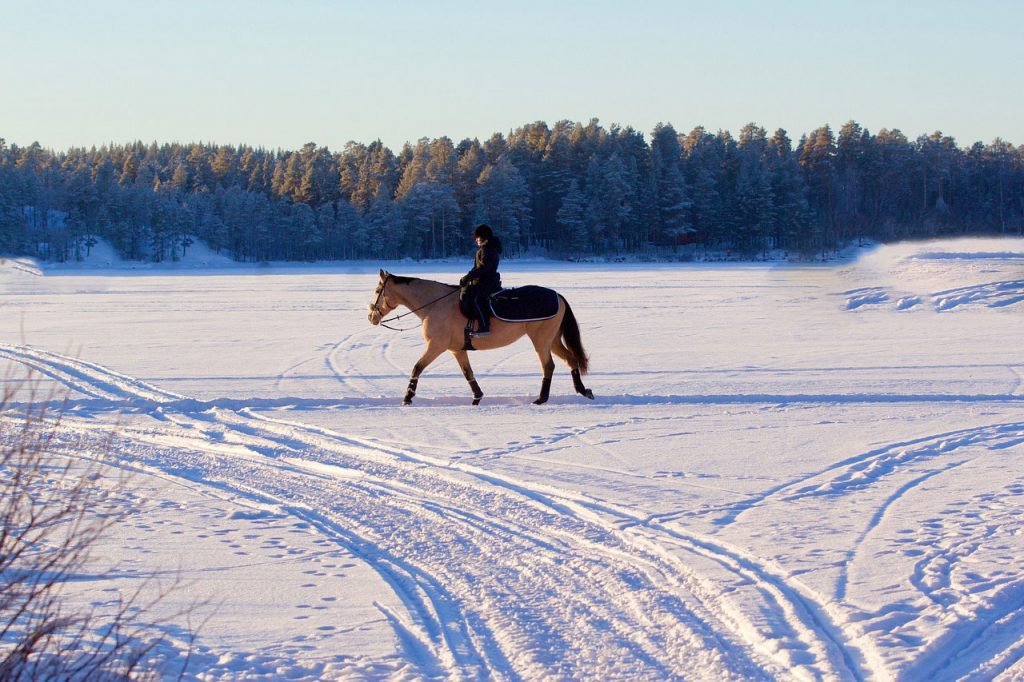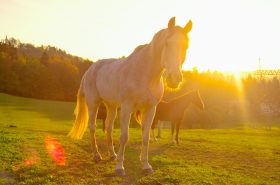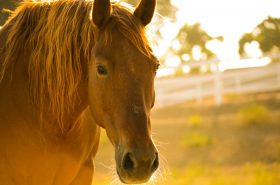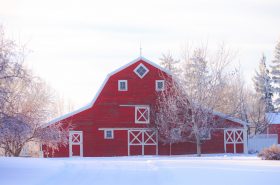Winter doesn’t have to be a struggle if you properly plan for it!
Many parts of the country have already started to experience frigid temperatures. Blankets have been pulled out and hay stacked tall in lofts. Riders have dug for their fleece breeches, bought new gloves, and wrapped themselves tight in waterproof jackets. If you’re like many, then the preparations for winter have already begun!
The best way to get ready for colder temperatures is to create a checklist. These tips below will make it easier for you to take on winter no matter how cold temperatures drop. Your horse is depending on you. Don’t let them down!
Access to Shelter
Even healthy horses can benefit from shelter when winter gets tough. Freezing rain, sleet, cold wind, and heavy snow can be rough. Wind and moisture can make it difficult for your horse to stay warm. Furthermore, rain and snow can flatten their fur and give them a chill. A run-in shelter or stall provides your horse with an escape from the extremes of winter.

Blanket or Naked
Many owners struggle with whether to blanket their horse or not. Without shelter, a waterproof sheet is almost necessary during inclement weather. Make sure blankets are pulled out and ready to go before winter starts.
A horse with thick fur and a good weight can usually provide their own insulation. If you plan on clipping your horse, then you should expect to blanket them. You’ll need a few options to include a waterproof sheet, mid-weight, heavy-weight, stable blanket, and cooler.
Unfrozen Water
Without access to unfrozen drinking water, your horse can suffer from colic. This includes when turned out and stalled. Fortunately, there are many solutions to frozen buckets. Some of these include automatic waterers, insulated buckets, plug-in heated water buckets in various sizes, and submergible de-icers. Water should ideally be above 45 degrees.
Extra Calories
Your horse’s winter diet should mainly consist of high-quality hay. When fiber is digested, it helps to warm your horse’s body. As a general rule, for every 10 degrees Fahrenheit below freezing, increase your horse’s hay amount by 10 percent. You’ll want to stock pile a good amount of hay before temperatures get too low.

Safe Footing
No horse is safe on ice! Check the pathway to their field and the conditions of their actual paddock. It’s a good idea to have ice melt on hand for dangerous spots.
Riders will also need to be cautious on hard surfaces. When your arena footing freezes, heavy trotting and cantering can be damaging on their joints. Trail riders will have to be cautious when snow covers the ground. You don’t want your horse to slip.
Regular Hoof Care
While your horse’s hooves may grow at a slower rate, they still need to be trimmed throughout fall and winter. Barefoot horses tend to do better with snowy and icy conditions. Many owners decide to pull the shoes right before winter begins. With shoes, “snowballs” can pack in their hooves making it nearly impossible for them to walk comfortably. Special pads can be added to avoid this!
Special Needs
Certain horses will require extra attention when temperatures drop. Those that are very young or old may need to be monitored a little more carefully. Seniors may fail to develop a thick winter coat or may lose weight quickly. You should invest in a quality senior feed. Furthermore, consider adding beet pulp or soaked hay cubes to their diet.
Your horse depends on you to get them through winter! Be proactive with colder temperatures by preparing ahead of time.
**
Emily Fought discovered her passion for horses early on in life. When she isn’t writing about them, you can find her in the barn riding. Although Emily’s background is in dressage, she enjoys cross-training and is an avid trail rider. She resides in Northwestern Pennsylvania with her husband and small dog. Together, they own and operate Humblewood Farm.



